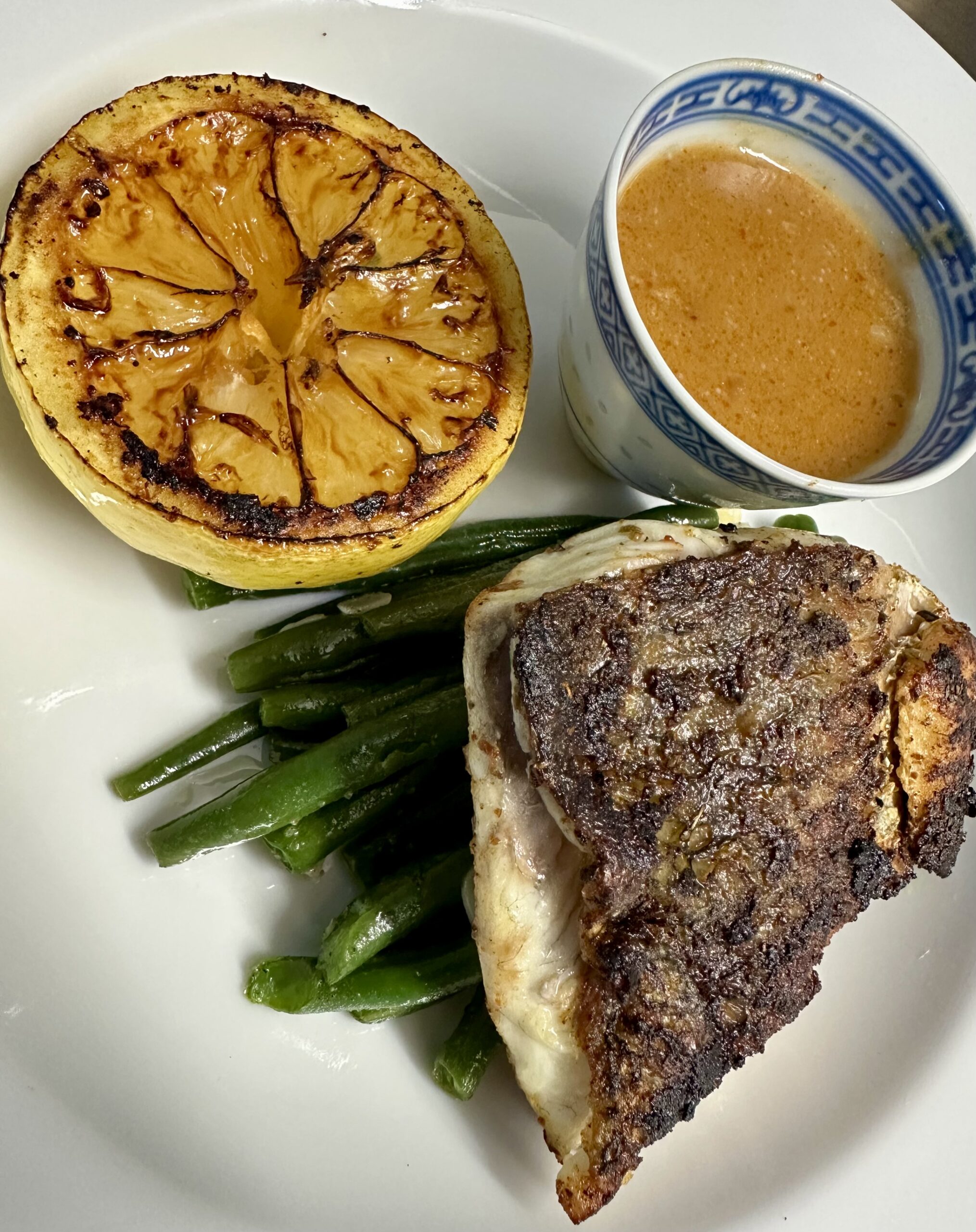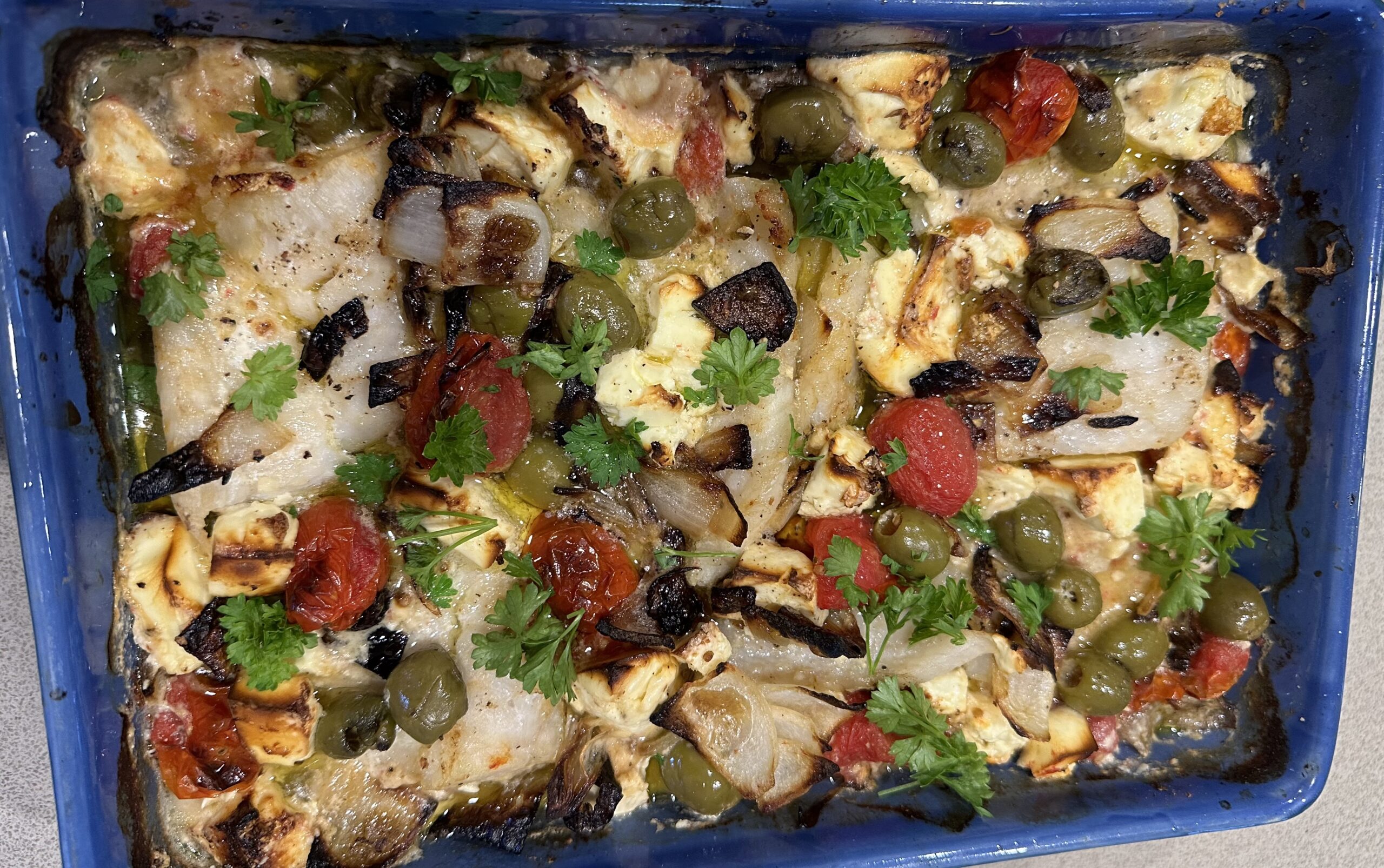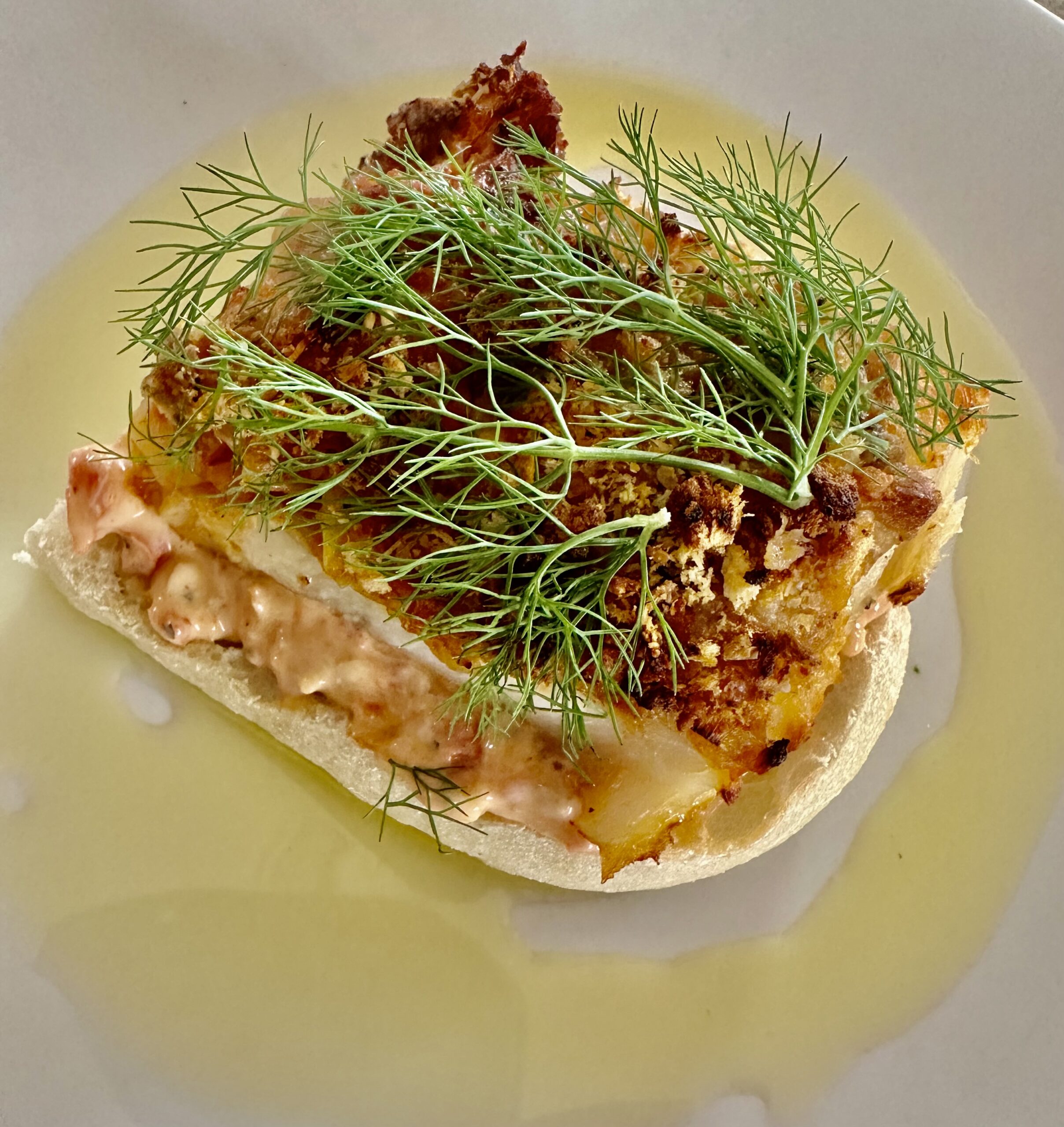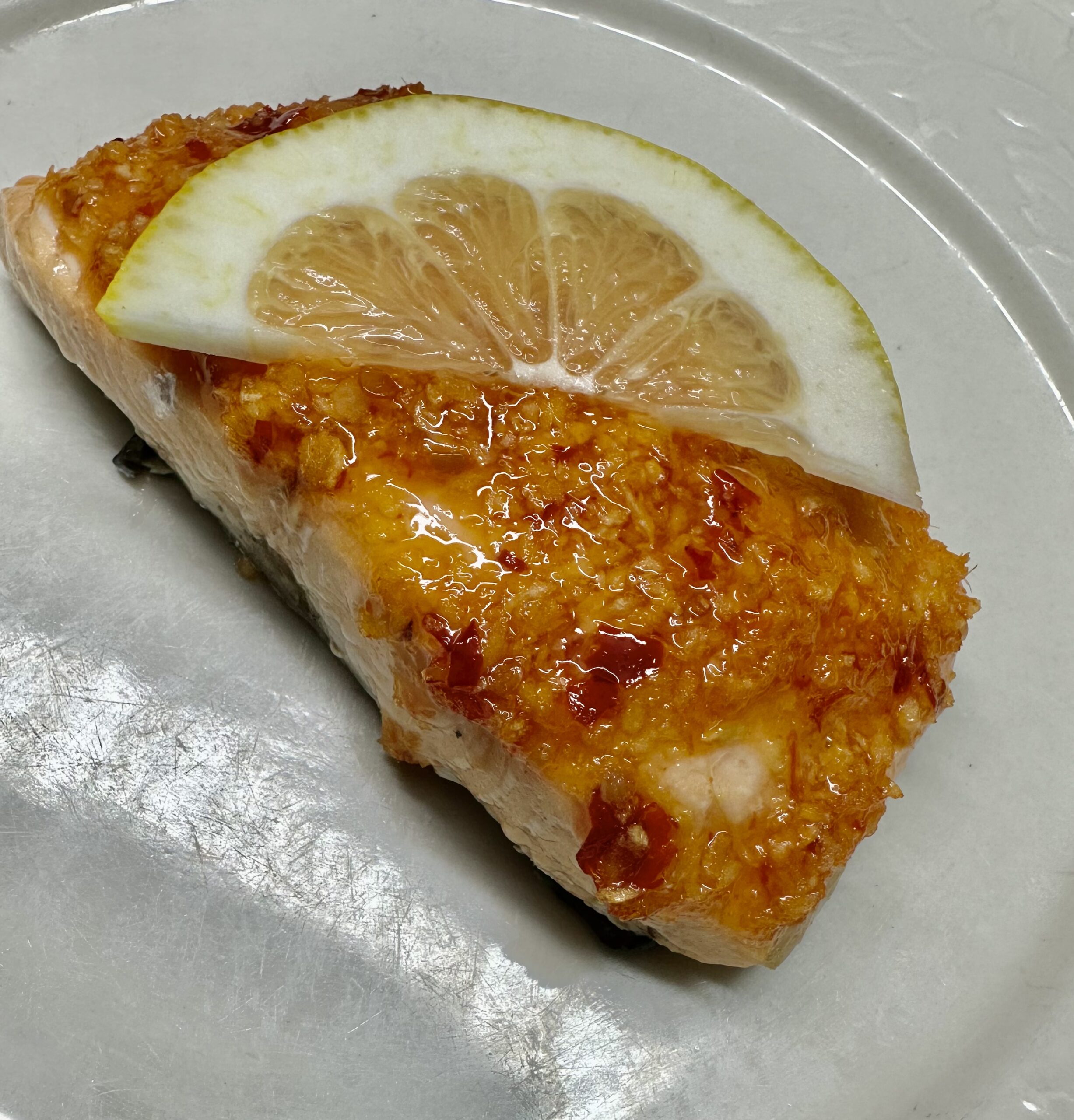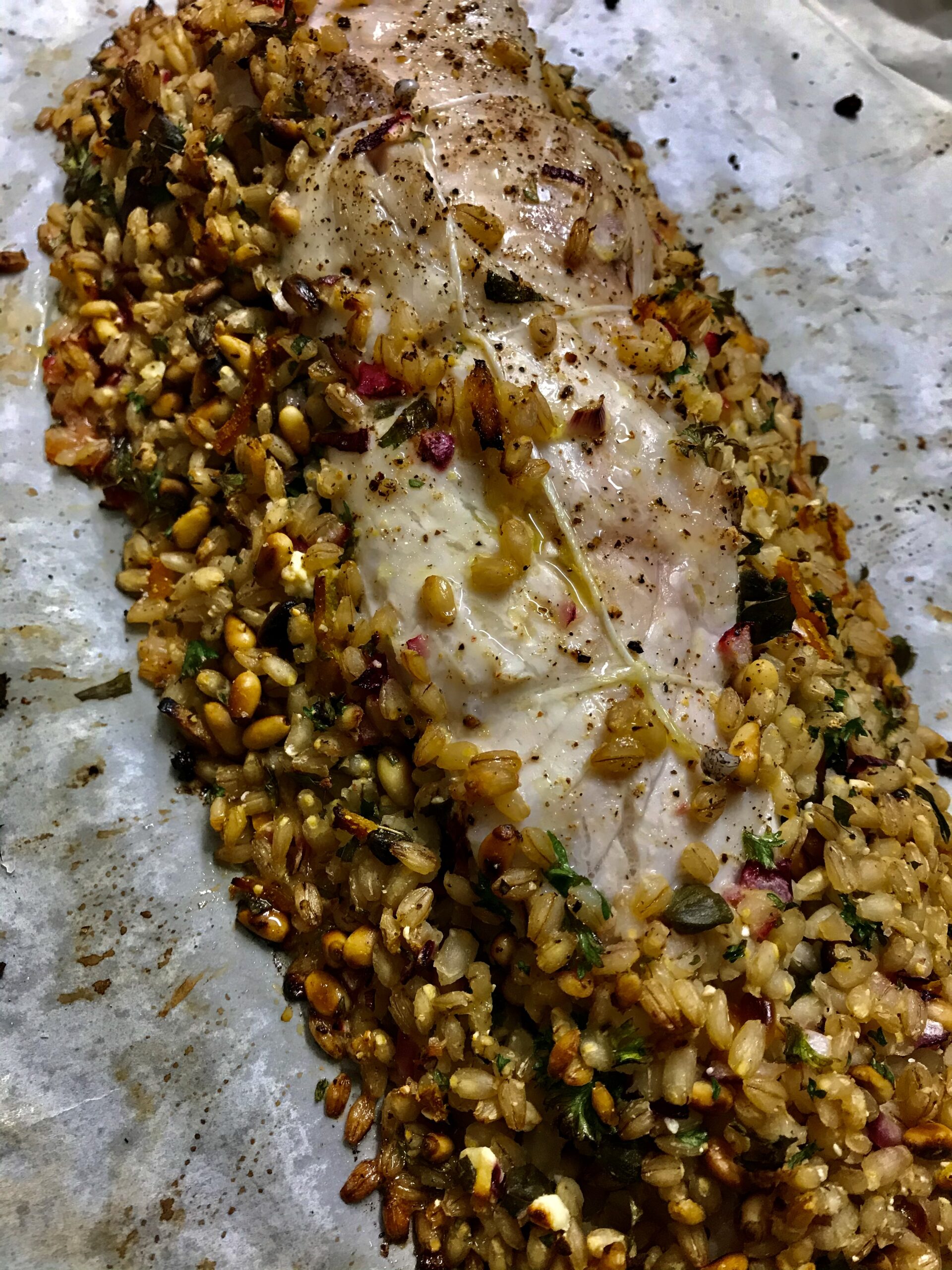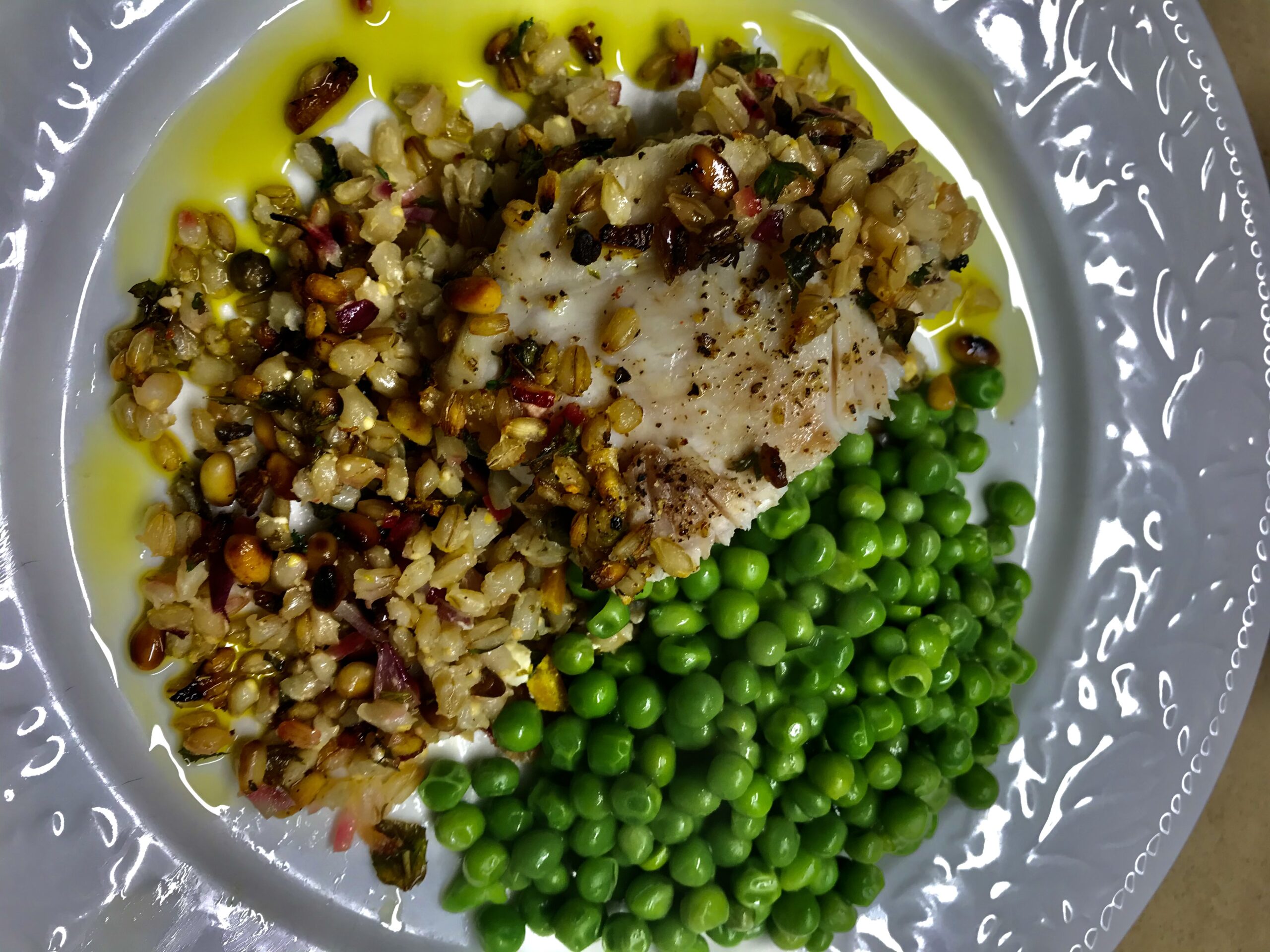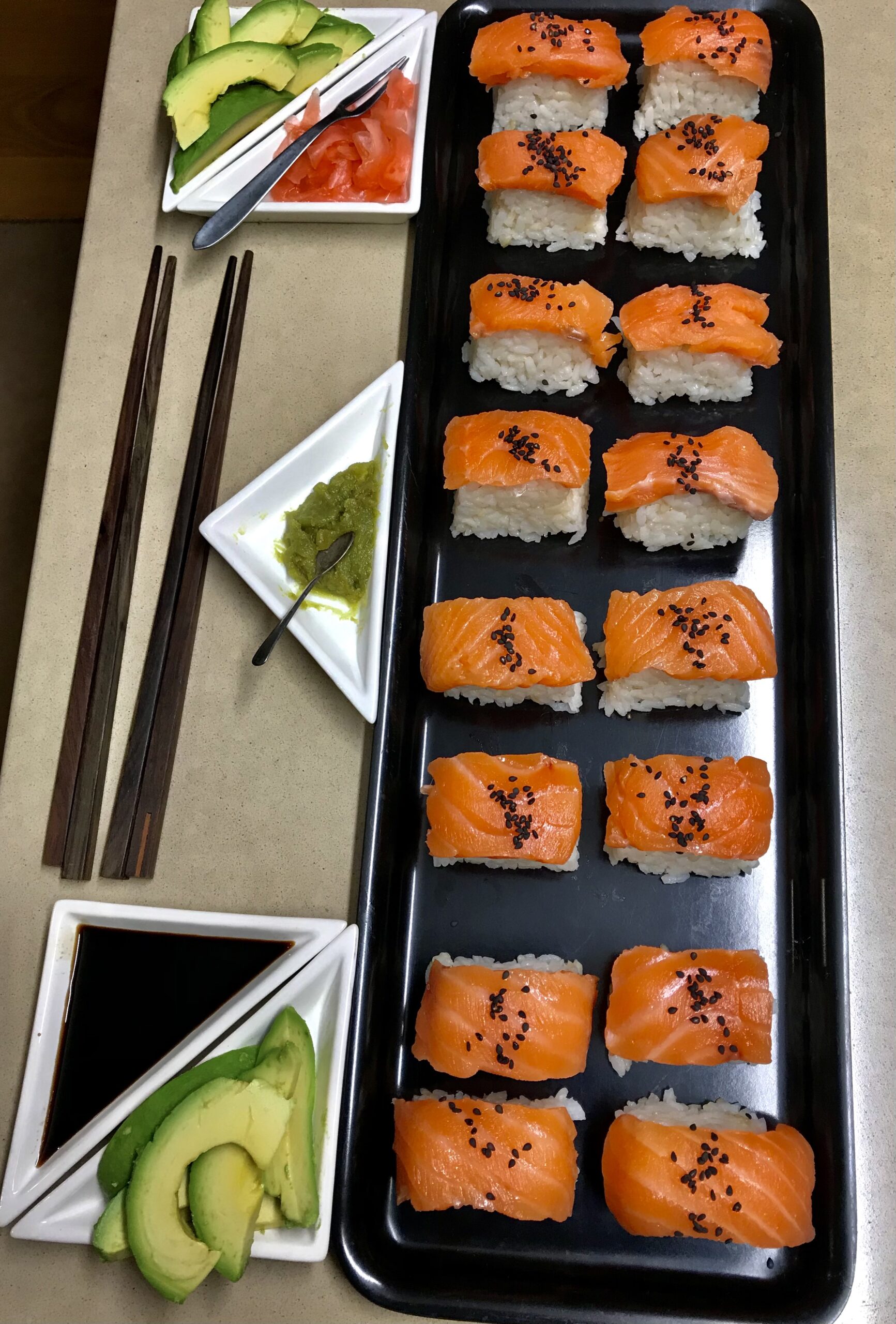In January we spent a week on the island of Nusa Lembongan just off Bali.
Curry Traders Restaurant and Bar has excellent, reasonably-priced food and was definitely the best restaurant we found during our stay on the island.
This is my adaptation of a dish we enjoyed when we dined there to celebrate our daughter Catherine’s birthday. I used barramundi and my recipe for a creamy red curry sauce, which goes with everything.
The first photo shows the dish in the restaurant, surrounded by some of the other dishes we ordered, including rice and Indian bread. The second photo is my version. Sorry I forgot to put a sprig of coriander on top of the fish!
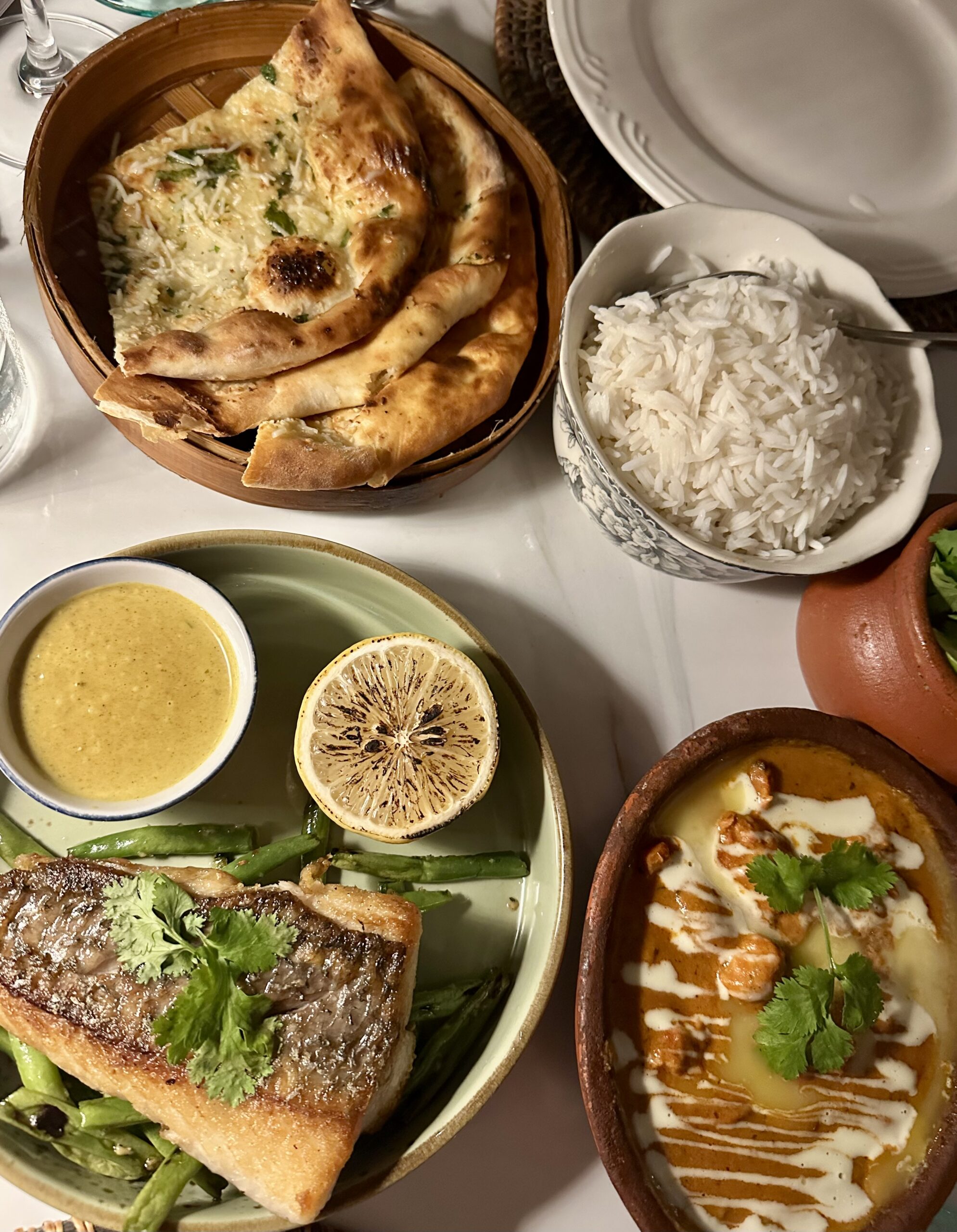
4 fillets barramundi or another firm-fleshed white fish with the skin on
Salt and freshly ground black pepper
1 Tbs vegetable oil
Red Curry Sauce
400g green beans, steamed until al dente
1 clove garlic, crushed
20g butter
2 lemons, halved
Coriander sprigs
Go to the link and make the Red Curry Sauce.
Season fish on both sides with salt and pepper, then place skin down in a cold, lightly-oiled frying pan, preferably non-stick. Turn on the heat and cook over moderate temperature for 5-6 minutes or until the skin is crisp, then turn and cook for 2-3 minutes on the other side, or until cooked through. Remove fish from pan, then add the lemon halves, cut side down, and cook until they are starting to blacken.
Meanwhile, heat butter and garlic in another pan. Add the steamed beans and seasoning and toss them to coat well.
Divide beans between 4 warmed serving plates. Serve fish on the beans. Heat the curry sauce and place some in four ramekins. Arrange the lemon and the curry sauce on the plates, garnish the fish with the coriander and serve immediately with steamed rice and/or Indian bread.
Freeze any leftover curry sauce for another time.
Serves 4
